 Asset Publisher
Asset Publisher
Nature reserves
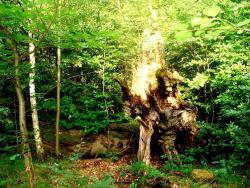 Martwy pomnik przyrody przy drodze do rezerwatu "Annabrzeskie Wąwozy". Fot. Jerzy Wilanowski
Martwy pomnik przyrody przy drodze do rezerwatu "Annabrzeskie Wąwozy". Fot. Jerzy Wilanowski
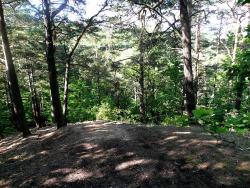 Rezerwat przyrody "Annabrzeskie Wąwozy". Fot. Jerzy Wilanowski
Rezerwat przyrody "Annabrzeskie Wąwozy". Fot. Jerzy Wilanowski
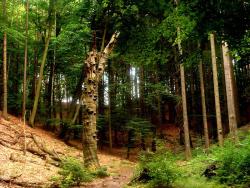 Rezerwat przyrody "Annabrzeskie Wąwozy". Fot. Jerzy Wilanowski
Rezerwat przyrody "Annabrzeskie Wąwozy". Fot. Jerzy Wilanowski
 Rezerwat przyrody "Buczyna Szprotawska". Fot. Jerzy Wilanowski
Rezerwat przyrody "Buczyna Szprotawska". Fot. Jerzy Wilanowski
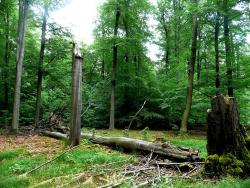 Rezerwat przyrody "Buczyna Szprotawska". Fot. Jerzy Wilanowski
Rezerwat przyrody "Buczyna Szprotawska". Fot. Jerzy Wilanowski
 Sosnowe "H". Fot. Jerzy Wilanowski
Sosnowe "H". Fot. Jerzy Wilanowski
Reserves are sectioned off areas of unique natural values preserved in their natural or slightly modified state. Forest economy is limited in such areas. The total number of Polish nature reserves is 1441, including 671 forest reserves with total area amounting to over 61 000 ha. Nature reserves make 1.6 % of all forests managed by the State Forests.
There are 2 nature reserves within the territory of the Szprotawa Forest District – "Annabrzeskie Wąwozy" and "Buczyna Szprotawska" – with joint area of 208.43 ha.
"Buczyna Szprotawska" Nature Reserve
Established: 1965
Area: 152.32 ha
"Buczyna Szprotawska" Flora Reserve is located in Lubuskie Province, in Szprotawa Commune, in the vicinity of Leszno Dolne. It is the largest nature reserve located within the territory of Regional Directorate of the State Forests in Zielona Góra and second largest nature reserve in Poland.
The reserve has been established to protect mixed forest stands of natural origin including beech and having features of Carpathian beech wood.
In addition to approximately 85 ha of beech woods the reserve also includes dense Linden stands. It surely is an interesting phenomenon as the species is usually found to make a fraction in mixed broadleaf forest stands in Poland.
In addition to rich flora the District also abounds in animal species, with a variety of birds, reptiles, mammals and amphibians. Nearly 38 species of birds nest in the District, including rare species such as Stock Dove or Red-breasted Flycatcher. There are 15 species of mammals here, with Wild Boar, Deer, Roe Deer or Fox being the most common species. The area is also inhabited by 5 species of amphibians, such as: Common Toad, Common Frog, Moor Frog, Smooth Newt and Northern Crested Newt. Reptiles are represented by 3 species: Slow Worm, Viviparous Lizard and Sand Lizard.
The most interesting species inhabiting the reserve and the surrounding forests is Edible Dormouse, a protected species included on Polish Red List of Animals.
The reserve includes "Szlak Popielicy" (Edible Dormouse Trail) Educational Trail and two walking trails – yellow and red – to learn in detail about the nature of this interesting area.
"Annabrzeskie Wąwozy" Nature Reserve
Established: 1977
Area: 56.11 ha
"Annabrzeskie Wąwozy" Nature Reserve is located in Lubuskie Province, in Nowa Sól district, in Bytom Odrzański commune. It covers forested area on the edge of Odra valley full of hills and ravines, in the vicinity of Dalkowskie Hills. The reserve can boast one of the highest hills of the range (220 m above sea level) and maximum topographic prominence of about 60 m.
The ravines are known for seeps of subterranean water and stands of ash riparian forests including Grey Alder.
Upland peaks and eastern areas of the reserve are dominated by pine or pine and oak tree stands with occasional birch and beech trees. Species of undergrowth include Lily of the Valley, Sweet Woodruff, European Wild Ginger, Deer Fern, Bird's-nest Orchid and Common Ivy. Vascular plants are represented by 192 species, including 39 species of trees and bushes. The rarest species are Common Fragile Fern and Common Oak Fern.
Fauna of the reserve includes 4 species of amphibians, 2 species of reptiles, 34 species of birds and 12 species of mammals. The most common mammals include Deer, Roe Deer or Badger, amphibians – Common Toad, Common Frog and Smooth Newt, reptiles – Slow Worm and Viviparous Lizard, and birds – Common Chaffinch, Great Tit, European Robin, Wood Warbler and Coal Tit.
The reserve includes red walking trail named "Dziadoszan" and yellow educational trail.
 Asset Publisher
Asset Publisher
 Asset Publisher
Asset Publisher
History
History
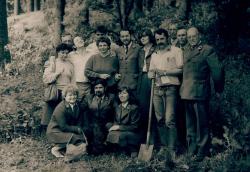 Pracownicy Nadleśnictwa podczas prac w terenie. Fot. Archiwum Nadleśnictwa Szprotawa
Pracownicy Nadleśnictwa podczas prac w terenie. Fot. Archiwum Nadleśnictwa Szprotawa
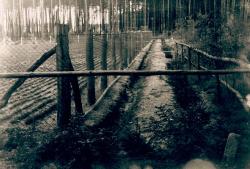 Widok na dawną szkółkę leśną. Fot. Archiwum Nadleśnictwa Szprotawa
Widok na dawną szkółkę leśną. Fot. Archiwum Nadleśnictwa Szprotawa
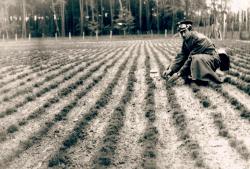 Leśnik podczas prac na szkółce. Fot. Archiwum Nadleśnictwa Szprotawa
Leśnik podczas prac na szkółce. Fot. Archiwum Nadleśnictwa Szprotawa
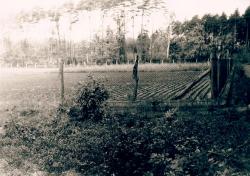 Widok na dawną szkółkę leśną. Fot. Archiwum Nadleśnictwa Szprotawa
Widok na dawną szkółkę leśną. Fot. Archiwum Nadleśnictwa Szprotawa
Current area of Szprotawa Forest District was established by Director-General of the State Forests on 1st April, 1993. Earlier it had also included Żagań Sub-district (from 1976).
First chronicle notes on forest economy in the area are dated as early as 1430. According to chronicles, in 1430 the town of Szprotawa already had its own forester to manage town forests. The forests covered the area of about 4300 ha and were located in south-eastern area of the contemporary Szprotawa Sub-district. They also included the area of "Buczyna Szprotawska" that had been a protected area for a long time and in 1930s gained status of a nature reserve covering the area of 85.20 ha. The reserve in its current shape covers the area of 152.30 ha. Two commemorative stones dedicated to successive Forest Inspectors of town forests from 19th century can be still admired in the reserve.
In addition to "Buczyna Szprotawska" there were two other reserves in the District - "Wysoki Las" (Tall Forest) and "Błota nad Szprotą" (Marshes by Szprota). The District Inspectorate also protected its natural monuments – "Chrobry" Oak, at the time known as "Wielki Dąb" (Huge Oak) ("Grosse Eiche") and "Buk Trębacza" (Trumpeter's Beech) ("Trompeterbuche").
The remaining forests of the present Szprotawa Forest District were owned by rich landowners and local farmers. Even today tourists can admire border stones of Heinrich von Neuman – 19th century owner of Wiechlice estate and the neighbouring lands.
Modern history
Szprotawa Forest District was established in 1946 and covered the area of current Szprotawa Sub-district amounting to about 8000 ha. The original division was very simple – one section constituted one unit.
Between 1945 and 1951 the division was based on an approximate age class table.
From 1952 to 1965 forest management was based on the provisional plan and finally in 1965 a definitive plan based on complete appraisal was drawn up.
During all the years that have passed since the end of WWII the State Forests, including Szprotawa Forest District, have gone through a number of reorganizations and territorial divisions.
In the 1970s, as a result of enclosure of units, a single large Forest District was formed to include 4 Sub-districts (Szprotawa, Małomice, Żagań and Żuków) and cover the area of more than 100 000 ha. Currently Szprotawa Forest District includes two Sub-districts (Szprotawa and Małomice) having approximately 19 000 ha of forests each, with total territorial range of 65 000 ha. As part of the Lower Silesian Wilderness Szprotawa Sub-district forms compact whole, whereas Małomice Sub-district includes over 300 forest complexes, including 106 with area below 1 ha and 114 with area from 1 to 5 ha. Field and forest border of the Forest District is about 1000 km long, which makes it comparable with the lengths of Polish-Czech and Polish-Slovakian borders altogether.
Since 1946 Szprotawa Forest District has been managed by seven Forest Inspectors (including the current one). The most famous Forest Inspector was Zygmunt Patalas (1951 - 1952), who was later appointed the Director of Forest Research Institute in Warsaw. From 1947 to 1951 Białobrzezie Forest District Inspectorate (from 1951 known as Żuków Forest District Inspectorate, included into Szprotawa Forest District Inspectorate in 1973) was managed by Adam Szczerba, who was later appointed the Director-General of the State Forests.


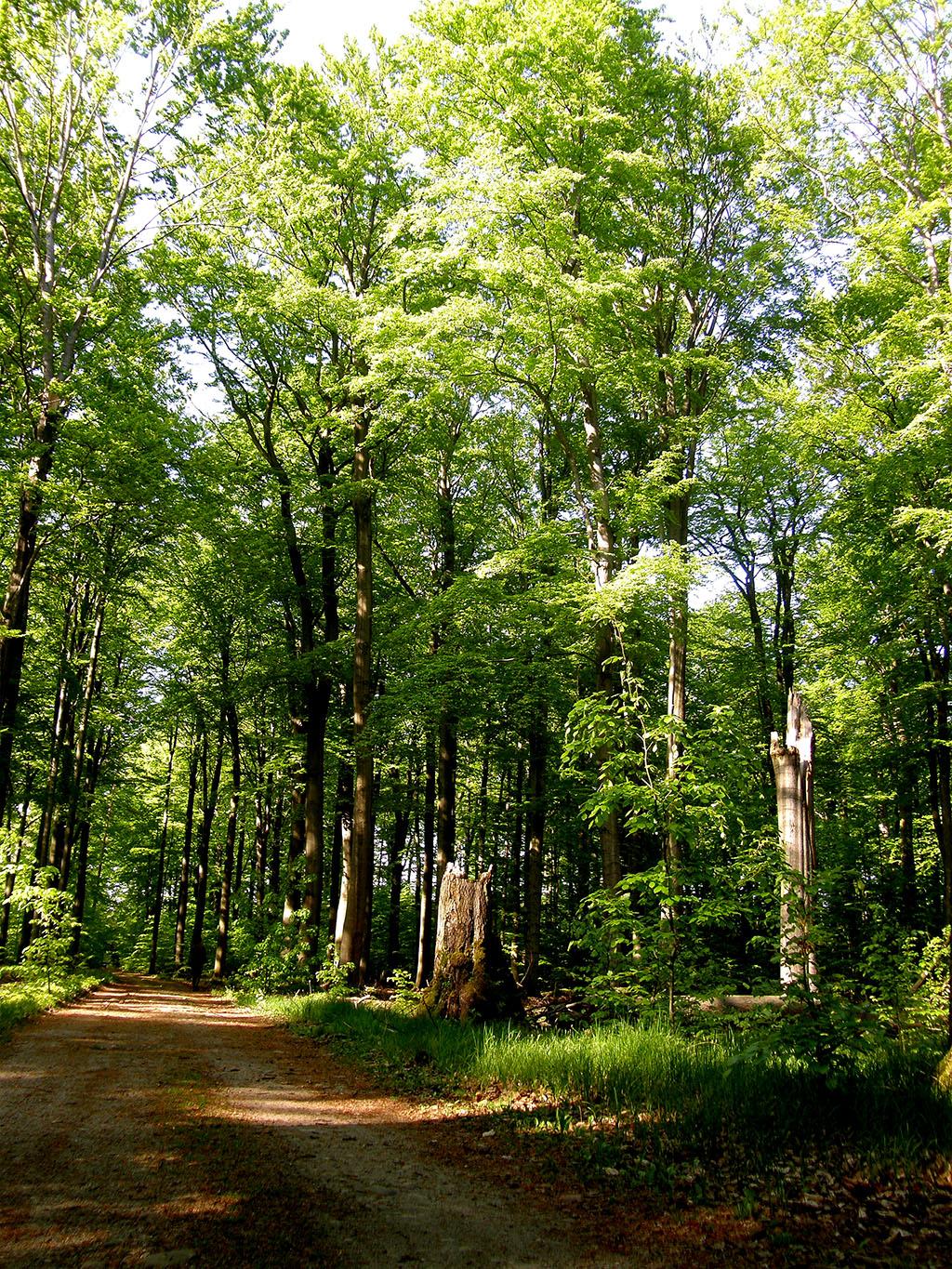




![„Naplotkowała sosna, że już się zbliża wiosna.[…] A wiosna przyszło pieszo - Już kwiaty z nią się śpieszą, Już trawy przed nią rosną I szumią: „Witaj wiosno!”. Jan Brzechwa - Przyjście Wiosny](/documents/1226291/0/Wiosna+1.jpg/8e6d02a0-5ffe-d486-49c3-5fac2b3b23c1?t=1711109156614&width=42)
